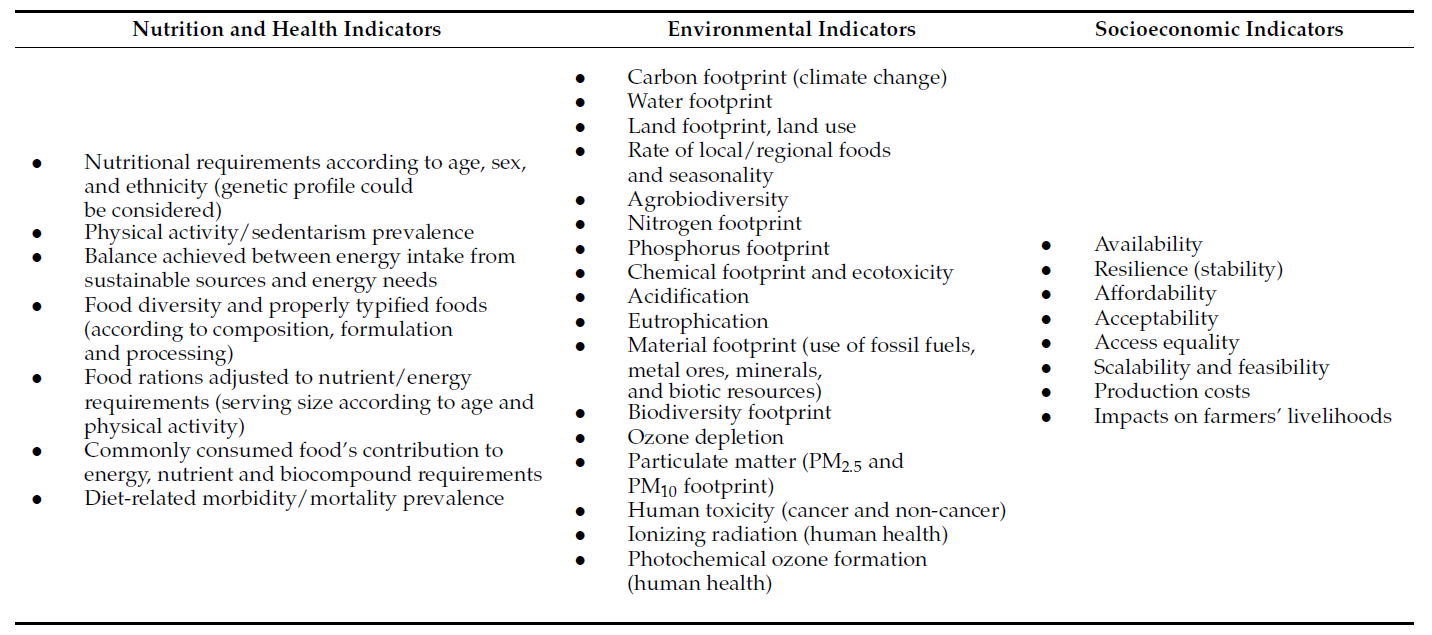29 Jun How do we quantify sustainable healthy diets?
A recent review has analysed the current indices, metrics and models for the nutritional quality and environmental sustainability of foods and diets. Such indicators must capture the all of important aspects of both these perspectives, without losing clarity.
The authors found that 50 dietary quality indices have been proposed over the last 30 years, many of which have limitations that lead to unrealistic recommendations for food substitutions that are not nutritionally interchangeable.
For environmental indices, the review found that most diet-related impact assessments use only a few environmental indicators in their analyses. These are commonly related to greenhouse gas emissions, land use and/or freshwater use. Other indicators are occasionally used, but no standardised procedure for dietary life cycle analysis exists.
The review also encompasses socioeconomic factors related to healthy sustainable diets. This is an omission of most environmental studies on sustainable diets, which the authors state leads to recommendations that are empirically unfeasible.
The authors address a number of key misconceptions that persist in sustainable healthy diet indices. Several of these relate to nutrients, foods or food groups that have been labelled as detrimental to health, while the scientific evidence around them calls for more nuance. Similarly, the nutritional requirements of different population groups are not always included in calculations. Degree of processing often features in indices, despite not describing or quantifying a clear effect on health.
On the environmental side, the authors address the rare inclusion of aspects such as seasonality or transport of food. They use the example of in-season locally grown vegetables having a substantially lower carbon footprint than greenhouse grown, and also point to the trade-offs: conventionally grown vegetables that are imported will often have a lower footprint than locally grown greenhouse vegetables.
The review concludes with an extensive list of nutrition, health, environmental and socioeconomic indicators that should be included in the assessment of sustainable healthy diets. The nutritional indicators include demographically adjusted nutrient intake requirements and a wide range of essential nutrients to be considered – approaches also taken by the DELTA Model. The development of an all-inclusive index for sustainable healthy diets would be a daunting task requiring extensive and detailed data for any foods or diets addressed. However, this is necessary if we wish to reliably quantify the contribution of foods to such diets, as selective use of indicators will lead to bias.
Image reproduced from the article by Aldaya et al. reused under CCBY 4.0






